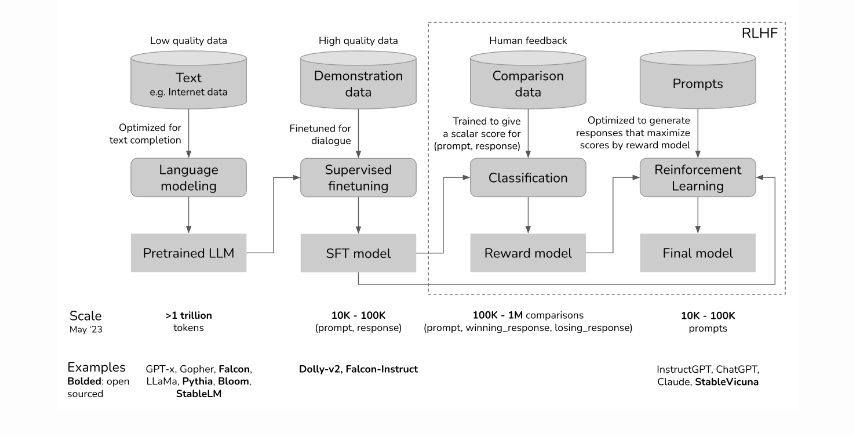I am often asked by (medical or masters) students how to get up to speed rapidly to understand what many of us have been raging and rallying about since the introduction of GPT-4. The challenge is twofold: First the technical sophistication of the students is highly variable. Not all of them have computer science backgrounds. Second, the discipline is moving so fast that not only are there new techniques developed every week but we also are looking back and reconceptualizing what happened. Regardless, what many students are looking for are videos. There are other ways to keep up and I’ll provide those below. If you have other suggestions, leave them in comments section with a rationale.
| Video Title | Audience | Comment | URL |
|---|---|---|---|
| [1hr Talk] Intro to Large Language Models | AI or CS expertise not required | 1 hour long. Excellent introduction. | https://www.youtube.com/watch?v=zjkBMFhNj_g |
| Generative AI for Everyone | CS background not required. | Relaxed, low pressure introduction to generative AI. Free to audit. $49 if you want grading. | https://www.deeplearning.ai/courses/generative-ai-for-everyone |
| Transformer Neural Networks – EXPLAINED | Light knowledge of computer science | Good introduction to Transformers and word embeddings and attention vectors along the way. | https://www.youtube.com/watch?v=TQQlZhbC5ps |
| Illustrated Guide to Transformer Neural Network | If you like visual step by step examples this is for you. Requires CS background | Attention and transformers | https://www.youtube.com/watch?v=4Bdc55j80l8 |
| Practical AI for Instructors and Students | Students or instructors who want to use AI for education. | How to accelerate and customize education using Large Language Models | https://www.youtube.com/watch?v=t9gmyvf7JYo |
- X (Twitter) handles to follow for state-of-the-art AI perspectives without the polemic: @karpathy, @SebastienBubeck, @jeremyphoward, @emollick, @DrJimFan. There are many other useful accounts but these have high signal/noise.
AI in Medicine
Medicine is only one of hundreds of disciplines that are now trying to figure out how to use AI to improve their work while addressing risks. Yet medicine has millions of practitioners worldwide, account for 1/6 of the GDP in the USA, and is relevant to all of us. That does mean that educational resources are exploding but I’ll only include a sprinkle of these below from an admittedly biased and opinionated perspective. (Note to self: include the AI greats from 1950’s onwards in the next version.)
- Peter Lee and others at Microsoft introduce GPT-4 to medicine, warts and all.
- This is a pre-2022 perspective on AI and machine learning with colleagues from Google. Machine Learning in Medicine. And here was a perspective with Andy Beam where we addressed the confusion between machine learning and big data (no, really, that’s why we wrote it.).
- I wrote a book with Peter Lee and Carey Goldberg to start a public conversation about AI in Medicine. Most amazing thing about the book: We wrote it in less than 4 months.
- Inspiring video: How a brain-computer interface with AI augmentation can be used to restore function to some individuals (that is before we are all turned into the Borg)
- A journal I am very happy to be part of : NEJM AI.
| Version History |
| 0.1: Basics of generative models and sprinkling of AI in medicine. Very present focused. Next time: AI greats from earlier AI summers and key AI in medicine papers. |



